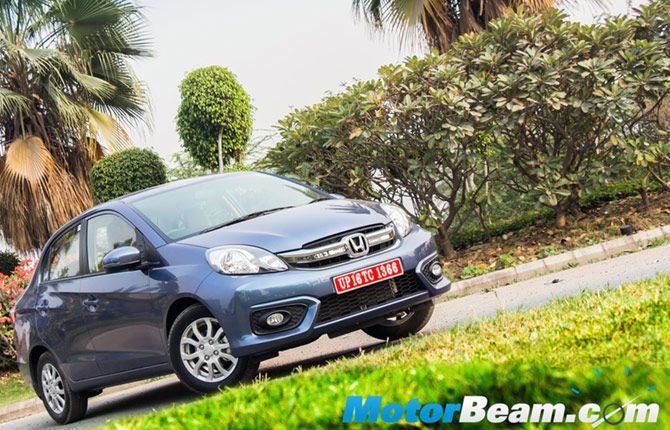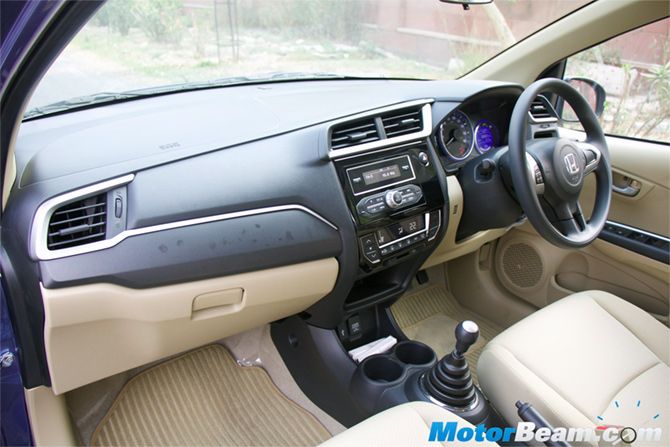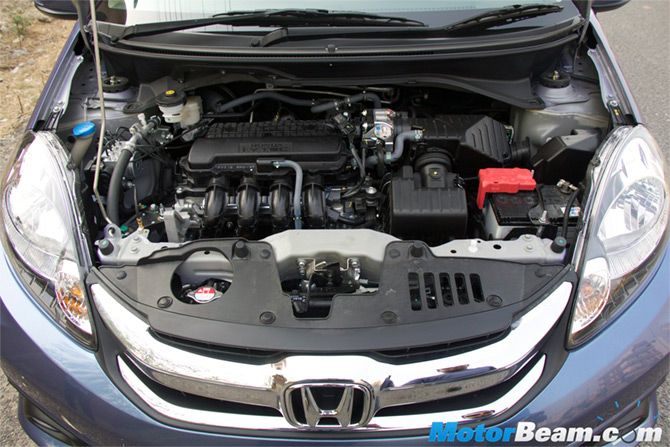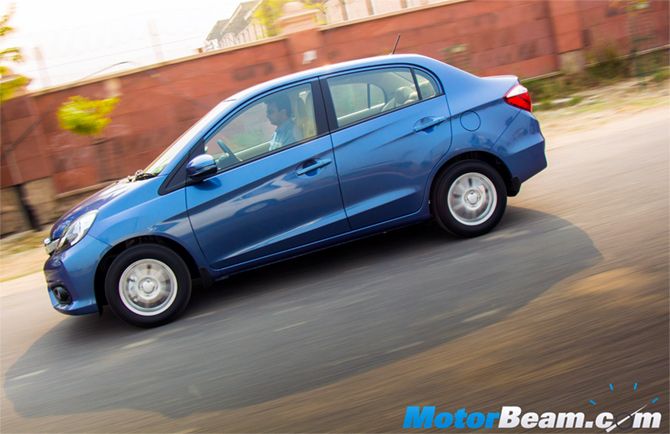Honda has updated its currently second largest selling sedan, the Amaze with a smart new front fascia and a much needed new interior.
 Since the car is an important product for the Japanese automaker and is a much loved vehicle by many Indians, the experts at MotorBeam.com went out and thoroughly reviewed the latest avatar of the vehicle.
Since the car is an important product for the Japanese automaker and is a much loved vehicle by many Indians, the experts at MotorBeam.com went out and thoroughly reviewed the latest avatar of the vehicle.
The Honda Amaze is the prime example of the Japanese giant's strategy in the country right now.
As seen by the design features, mechanicals and the equipment levels of the car, it is safe to say that Honda is currently on the path of least resistance and treading cautiously with its every step.
Continuing with its 'Don't fix what isn't broken' game plan, Honda has decided to give the Amaze a much needed facelift inside-out and finally brought the car into 2016.
 We decided to test the car through its paces and see what those changes actually mean for the consumer.
We decided to test the car through its paces and see what those changes actually mean for the consumer.
Approaching the vehicle from the front, one would appreciate the new understated aggressiveness of the front fascia, which is the result of a new stylised bumper and chrome grille.
At the rear, Honda has brought in new clear type combination tail lamps and a revised bumper design.
The side profile of the vehicle remains the same as before, with two sharp creases running down the doors.
 The biggest and most talked about change has come in form of the new interior and dashboard design.
The biggest and most talked about change has come in form of the new interior and dashboard design.
Gone is the wonky looking Brio dashboard with pedestrian instrument clusters, aftermarket looking infotainment system and hard scratchy plastics.
In its place is the new sophisticated City-inspired dash that also gets silver accents and piano black finish in the centre.
Replacing the manual AC is an automatic climate control which gels well in the central housing. Interior quality, fit and finish feels better all around.
 The car sees no change in the engine line-up and is powered by the 4-cylinder, 1.5-litre i-DTEC mill which produces 100 PS of power and 200 Nm of torque.
The car sees no change in the engine line-up and is powered by the 4-cylinder, 1.5-litre i-DTEC mill which produces 100 PS of power and 200 Nm of torque.
As before, the motor is in the meat of power in low and mid rev range, but loses steam as the tachometer needle rises.
The petrol powered Amaze has a 1.2-litre, i-VTEC engine producing 88 PS of power and 109 Nm of twisting force. The 1.2-litre i-VTEC is a gem of an engine which is quite rev happy and performs very well in the mid and high-end of the rev meter.
Honda claims they have improved upon the NVH levels with better insulation.
 The engine is mated to a 5-speed manual gearbox which is good, but does not have the buttery-smoothness of say a Hyundai i20 or a Maruti Swift.
The engine is mated to a 5-speed manual gearbox which is good, but does not have the buttery-smoothness of say a Hyundai i20 or a Maruti Swift.
The only mechanical change in the car is the exit of the 5-speed torque converter AT gearbox and the introduction of a CVT transmission.
Due to its infinite number of ratios, the gearbox is inherently smooth in its operation and even returns better fuel efficiency figures than its manual counterpart.
 The driving dynamics continue to be the strongest point of the Amaze as the car exudes immense confidence while tackling high speed corners.
The driving dynamics continue to be the strongest point of the Amaze as the car exudes immense confidence while tackling high speed corners.
The ride quality is comfortable and flat as the speed rises. Also commendable is the steering feedback which is light and easy to operate at low speeds and weighs up nicely as the speed increases.
The brakes are strong as well offering effective stopping power with a reassuring pedal bite.
 The sub-4 metre sedan segment is the most hotly contested segment in the Indian car market.
The sub-4 metre sedan segment is the most hotly contested segment in the Indian car market.
The Honda Amaze turned out to be a runaway success for the company despite its obvious handicaps in the form of plain interiors and material quality because it got all the basics right.
The car was already the most proportionate looking compact sedan, has a peppy and frugal engine line-up and is comfortable to ride at any speeds.
Now with these upgrades, the Honda Amaze should see more customer footfall in showrooms this festive season.












 © 2025
© 2025